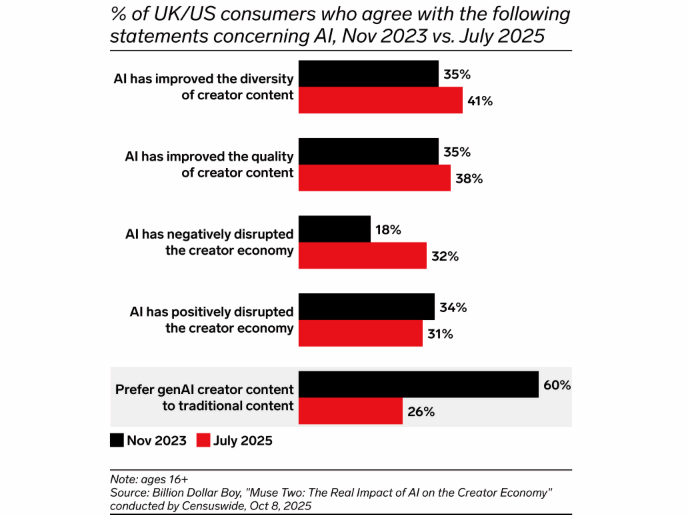By David Baldwin
Back in the 1970s, people encountered 500 to 1,600 ads daily. If that number seems mind-blowing to you, set your mind fire extinguishers to full geyser because today the average person comes across somewhere between 4,000 to 10,000 ads in a single day.
It makes sense, right? In the ‘70s you had fewer, mostly analog media choices compared to today where you have all the traditional outlets plus tons of social media feeds, podcasts, satellite radio, banners, product placement, and all the digital hoohah serving you ads at an ever-escalating rate. We are swimming in advertising not to mention being tracked and cookied to death. (Cookie-less world, sure.)
In fact, I’d argue that social media has outkicked its coverage with advertising. Because we’re on the receiving end of such a nonstop barrage from these platforms that they don’t really exist – in any recognizable way – for the reasons they started in the first place. Remember when Facebook was about connecting with friends and Instagram was about sharing photos? Until we say, “Enough!” there will never be enough for the feeds.
So, the question is: What and how are we being fed?
First, let’s clarify, I’m an advertising guy. I’ve been doing this for going on (almost) four decades. I love advertising. When it’s good, it’s great and when it’s bad, it’s annoying – a very simple equation. But in my mind, that’s the game. Try to do the good stuff that people like and you can change everything.
It doesn’t take a raft of research to realize that most advertising these days now comes from the direct marketing wisdom of the ages: ROI-driven, tried and true rules. Never mind that the history of direct marketing is littered with campaigns that bucked the system and engaged its consumers with wonderful content and won big results. But sadly, that work has never been the norm, and it certainly isn’t these days.
And maybe I just committed what might be the problem: The word “consumer” and the idea that we’re “consumers.”
How did we – human beings with thoughts and feelings, wives, husbands, children, families, relationships – ever allow ourselves to be relegated and chained to the idea of consumption?
Are you a consumer? Really? Is that why you exist, to consume? Look at your little children, are they consumers? Are you a locust descending on a field to consume all in your path? I hope not.
And you might say it’s just a word but my orientation as a copywriter is that words are everything and how we label things bends perceptions. And man, have we bent our perceptions to think of ourselves as “consumers.”
Seriously, count how many times you hear the word “consumer” during your day. I counted once and it was something like 63 times in one day. It’s on the news, in economic forecasts, and in the papers. You can find it all over the pages of the Wall Street Journal and on just about any news site you can name. It’s everywhere.
The word is ubiquitous, and we don’t even question it. Maybe the situation was summed up beautifully by Howard Gossage who said, “I don’t know who discovered water, but I’m pretty sure it wasn’t a fish.” We’ve lost perspective and don’t see it anymore; we just accept the notion that we’re here to be consumers.
So, what’s the alternative? What if we start using different words to think of our customers?
What if we think of them as collaborators, co-conspirators, co-creators, or some better descriptor? Let’s treat them like human beings – your friends, family, brothers, sisters, moms, neighbours – not demographic statistics. David Ogilvy famously said, “The consumer is not a moron, she’s your wife.” We know this in our bones, let’s act like it.
What kind of value are you creating in people’s lives with your brand and your marketing? Start there.
Maybe, on a fundamental level, we replace consumption with collaboration. This is a facet of the diamond put forward by Michael Porter known as “Shared Value” – the idea that business is in a better position to make the world better than non-profits, NGOs, and even churches because what business does is solve a problem and then scale the solution. If business gets on the track of making things better, it’ll happen much faster than any other way. This doesn’t negate other organizations doing good, far from it. It just might offer a quicker route to making a difference by using market forces.
But a good first step might be to stop thinking of people as a number to achieve an objective. I call it the Golden Rule of Marketing:
“Market unto others the way you’d like to be marketed to.”
We have a responsibility to engage, to inform, to create quality experiences – not run into the room, drop a grenade and scream at people, exhorting them to call or click on us, dammit! It’s exhausting and unrelenting.
There has never been a better time to create work that has a point of view, a message, and leaves the viewer/reader with a positive experience or better informed. We have an opportunity to make people feel good about what we make, what they buy, and why they buy it.
Rather than consume or buy, just maybe they’ll buy into what you’re making and selling. And isn’t that better for everyone?
Feature Image Credit: Jingxi Lau
David is an author, film producer, entrepreneur, and one of the most awarded copywriters and creative directors in the ad business today. The founder of Baldwin&, co-founder of the Ponysaurus Brewing Co, co-founder of Take Your Seat, and author of the Amazon bestseller The Belief Economy, David is also the former Chairman of the One Club, and his work has been recognized by Cannes, One Show, D&AD, Clios, Effies, and more. His film work (Art & Copy, The Loving Story) has won two Emmys and a Peabody Award.




















